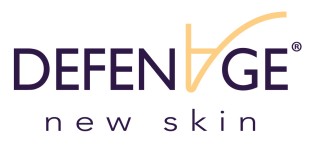
Gua Sha Routine for Face, Neck, and Chest to Sculpt and Renew Skin
Gua Sha routines have become increasingly popular in recent years, but the practice has existed for centuries. This process has numerous benefits for your skin’s health and appearance, and many people enjoy doing Gua Sha at home as part of their regular skincare routine. Read on to learn the origins of Gua Sha, its advantages, and how to use it effectively for skin, neck, and chest care.
Contents:
The Origins of Gua Sha

Gua Sha, which translates to "scraping sand" in Chinese, dates back thousands of years to traditional Chinese medicine. This technique uses a smooth-edged tool to gently scrape the skin, stimulating blood flow and promoting healing. Originally, Gua Sha was primarily used to relieve pain and treat various health conditions. Still, Gua Sha's benefits for the face and skin have become increasingly recognized in modern times.
Why Try Gua Sha?
So, why should you try a Gua Sha routine? There are several benefits of this practice.
Lymphatic Drainage
One of the primary benefits of Gua Sha is lymphatic drainage. As you gently scrape the tool across your face and neck, you’re helping move lymphatic fluid, which reduces swelling in the neck and chest. When these fluids are drained, it helps support your body’s natural detoxification process.
Clearer Skin
A Gua Sha routine helps increase circulation and oxygenate skin cells, leading to a more radiant complexion and fewer blemishes and acne. Many people experience diminished acne and fewer breakouts from consistently doing Gua Sha, though you should never use the tool on pustules or broken skin.
Clearer Skin
As the gentle scraping increases circulation and brings oxygen into the skin cells, it also promotes cell renewal. This means Gua Sha can help minimize the appearance of scars on your face, neck, or chest and lead to smoother, more even-toned skin over time.
Clearer Skin
If you deal with puffiness or fluid retention on your face or neck, Gua Sha can help. As mentioned above, this practice can help promote lymphatic drainage and remove other fluid buildup that causes puffiness.
Dark Circles
Do you struggle with dark circles under your eyes? Practicing Gua Sha at home can help. Improved circulation and lymphatic drainage can reduce the appearance of dark circles, giving you a brighter, refreshed, and well-rested look.
Wrinkles and Fine Lines
Many people use Gua Sha for its anti-aging properties. This practice can help reduce the appearance of fine lines and wrinkles by stimulating cell renewal and collagen production and increasing blood flow, which can lead to a more youthful appearance.
Sharper Jawline
Does Gua Sha help the jawline? Yes. A consistent Gua Sha routine can also help tone the muscles in your jaw, which can help reduce the sagging that often accompanies aging and lead to a sharper and more sculpted jaw.
Define Cheeks
Another of the many Gua Sha benefits for the face is more defined cheekbones. The process promotes better circulation and muscle tone, giving your cheeks more definition and creating a slim and lifted look.
Using Your Gua Sha for Your Neck, Face, and Chest
Now that you know the benefits, it's time to learn how to use Gua Sha on your neck, face, and chest. You want to ensure you’re using the proper technique to get the desired results without causing any issues.
Sanitize Your Tools
Before starting your Gua Sha routine, you must clean your tools. This is a crucial step to prevent introducing bacteria to your face from a used tool, and it must be done before every session. Clean your Gua Sha tool with soap and warm water, then — if the material can handle it — you can sanitize it with alcohol.
Cleanse Your Skin
Take a few minutes to clean your face, neck, and chest before beginning your Gua Sha routine. You want to ensure no makeup is left on your skin to prevent clogging pores or spreading potential bacteria.
Moisturize
To boost your Gua Sha results, moisturize before beginning your session. You can use a serum, face oil, or moisturizer to create a smooth surface on your skin. This is essential so the Gua Sha tool can easily move over your skin without pulling or tugging.
Press the Tool Against Your Skin
Your tool should be placed at a 15 - 30-degree angle wherever you start the Gua Sha routine; however, it’s best to start with your chest and then move upward. Where you begin will determine which side of the tool you should use, and you should start with the flat side for your chest.
Scrape in an Upward and Outward Motion
So, how should you do your Gua Sha routine for the best results? You want to work from the middle out and bottom up for whichever area you start in. This means if you are working on your jaw, you would start in the middle of your chin and — using light but consistent pressure — scrape up toward your ear while following the bone.
Once you reach the ear, you can wiggle the Gua Sha on your skin for a few seconds to help promote fluid drainage. For each section, you should do the motion at least five times and only in an upward motion. You shouldn’t pull down on your skin with the tool, or you risk damaging the delicate skin on your chest, neck, and face.
It’s also helpful to place two fingers gently on the skin at the start of each section, which can hold the skin taut instead of pulling on it. For example, place two fingers next to your nostril before moving the tool along your cheekbone.
A typical Gua Sha routine for your chest, neck, and face may look like this. Remember to make at least five passes per section.
- Start at the midline of your chest and sweep out toward the armpit.
- Move to the outside of your neck and scrape from the base to just below your ear.
- Next, move closer to your throat and swipe each side up to your chin. Do not go directly over your throat.
- Move to your chin and do each jawline.
- Sweep each cheek from the edge of the lips toward the bottom of the ear.
- Go from the nostril along the cheekbone toward the middle of the ear.
- Next, move to the temples and move out toward the hairline.
- Do each eyebrow following the eye bone and going out toward the ear.
- Move to the center of the forehead (starting between the eyebrows) and scrape the middle, left, and right sections moving toward the hairline.
Now you're done!
Skincare
Once you’ve finished the Gua Sha routine, you can complete your regular skincare routine without any problems.
Choosing Your Shape
Gua Sha tools come in several shapes and sizes; some will be better at targeting certain areas than others. For a beginner's Gua Sha routine, looking for a simpler tool is best until you feel comfortable with the process and confident using more detailed tools. Let’s look at a few different shapes of tools to help you determine which might be best for you.
Concave
A concave Gua Sha tool is an excellent choice for beginners trying Gua Sha at home. The flat and curved sides conform to the contours of your face and body, making them versatile and well-suited for various areas, including the face, neck, and chest.
Double Curve
The dual points of the double-curve tool create more precision during a Gua Sha routine. This tool is great for promoting circulation under the eyes and around the cheeks and cheekbones.
Cleft
The square notch on the cleft Gua Sha makes it excellent for deep contouring, specifically around the jawline.
Toothed
A toothed Gua Sha tool, also known as a comb tool, has a serrated edge to improve circulation. It is helpful for fine lines and wrinkles on the chin, cheeks, temples, and forehead.
Pointed
The pointed tip targets specific pressure points during a Gua Sha massage. It’s an excellent option for fine lines and wrinkles and is good for use around the brows.
Choosing Your Material
In addition to the various shapes, Gua Sha tools are made from different materials with unique properties. Here are some of the materials you can choose from.
Natural Stone
Most Gua Sha tools are made from natural stone, per ancient Chinese tradition. Here are some of the primary stones and their benefits.
- Bian stone: This stone is known for its healing effects and is believed to have a harmonizing effect on the body.
- Jade: Jade Gua Sha tools are calming and soothing to the skin, making them excellent for reducing puffiness and calming inflammation. Jade is one of the most popular options for Gua Sha.
- Rose quartz: These stones are associated with love and beauty. It is believed that they help promote self-love and skin rejuvenation.
- Amethyst: Amethyst is said to promote calming and balancing energy and is suitable for stress relief and relaxation.
- Obsidian: This stone is said to promote grounding and detoxification, which can be good for skin clarity.
- Green aventurine: Aventurine can help heal emotional balances, calm irritation and anger, and reduce inflammation.
Stainless Steel
Gua Sha tools made from stainless steel are known for their antibacterial properties since they are nonporous and can have a cooling effect on the skin. These tools can come in several different colors to match your preferences.
Ceramic
Ceramic Gua Sha tools are typically smooth and can be heated or cooled for added therapeutic benefits. However, these tools tend to be more delicate, so that’s something to consider if you choose this option.
Synthetic Stones
Synthetic Gua Sha tools are made from materials like opalite that mimic natural stone. They won’t have the same perceived healing benefits but are often more cost-effective than natural stone tools.
Glass
Glass Gua Sha tools can be filled with liquid and used for cooling or heating applications. They are versatile and easy to clean.
Electric
Some Gua Sha tools incorporate electric features, including heat, vibrations, or LED lights, to improve effectiveness and create a spa-like experience.
Other Options
Gua Sha tools can also be made from resin, plastic, bone, or wood, each of which can be more affordable and eco-friendly than the materials mentioned above.
At-Home Gua Sha Tips
Now that you know how to use Gua Sha on the neck, chest, and face, here are a few additional tips to help you see the best results.
Types of Serum, Oil, or Moisturizer to Use With Gua Sha
This comes down to personal preference and your specific skin type and needs. Serums with active ingredients, facial oils, or moisturizers can enhance the glide of the Gua Sha tool and provide additional benefits to your skin.
How Often Should You Gua Sha?
If you can fit a daily Gua Sha routine into your life, you’re welcome to! As long as your skin handles the process well and there is no redness from the previous session, you can do your routine every day.
Enhance Your Skincare Routine With Gua Sha
Gua Sha is an excellent skincare and self-care practice for all skin types. It helps promote lymphatic drainage, clearer skin, and wrinkle reduction while also reducing puffiness and creating more cheekbone and jawline definition. Find the right Gua Sha tool for your needs, then incorporate the practice into your morning and evening skincare routine.
If you’re looking for high-quality skincare products to use along with Gua Sha, you can find everything you need at DefenAge.
We recommend The Ultra Neck Perfection Treatment! This set is the perfect collection to enhance your Gua Sha routine.
TheUltra Neck Perfection Treatment contains:



